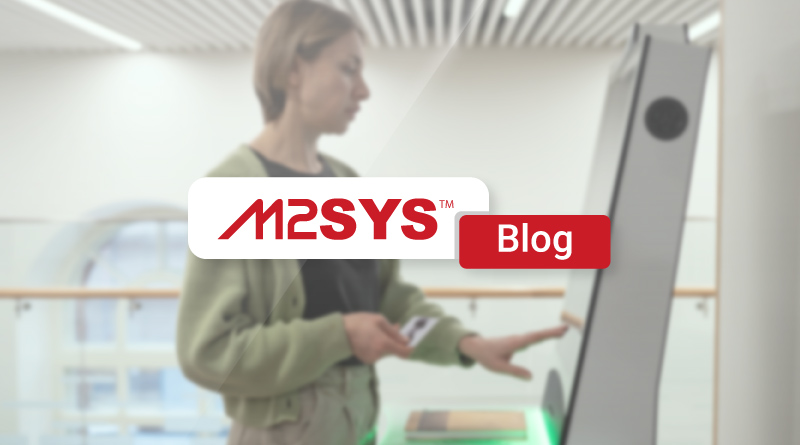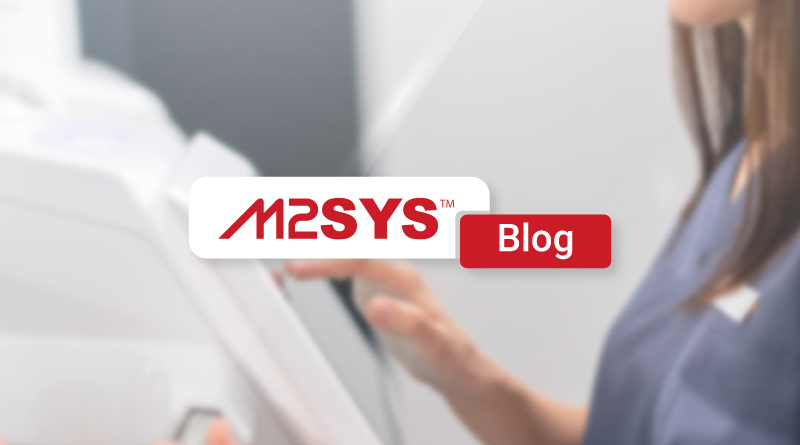Accelerate Permit Approvals with Real-Time Issue Detection
Real-time issue detection and automated permit approval workflows revolutionize urban management by reducing delays, enhancing transparency, and cutting costs. These systems streamline processes, ensuring regulatory compliance and boosting citizen satisfaction. Discover how tools like M2SYS transform permit approvals for state and federal agencies.
TL;DR
Accelerate Permit Approvals with Real-Time Issue Detection
- Transform permit approvals with real-time issue detection and automated workflows, reducing delays and paperwork.
- Automated systems streamline processes, ensuring compliance and boosting citizen satisfaction by addressing bottlenecks like zoning conflicts and safety hazards.
- Digital platforms cut approval times by up to 50%, enhancing transparency and trust with real-time updates and audit trails.
- Adopt M2SYS's City & Municipality Management Solution for a no-code, mobile-first, cloud-hosted setup, offering seamless integration and flexible workflows.
- Real-world applications show significant time reductions in permit approvals, supporting faster urban development and economic growth.
Ready to transform your permit approval process? Contact us to learn more about implementing automated workflows and real-time issue detection in your city.
Speed Up Permit Approvals with Real-Time Issue Detection
Imagine a bustling contractor in a rapidly expanding city submitting a building permit application early in the morning. Typically, this would mean weeks of waiting, endless paperwork, and frustrating delays. However, with the integration of real-time issue detection and automated permit approval workflows, the system instantly scans the plans, flags a minor zoning issue, and notifies the contractor immediately. He resolves it that afternoon, and by evening, the permit is approved. This scenario is not a dream but a reality, transforming urban management for state and federal agencies, government contractors, and software providers. Municipality Management
In today’s fast-paced urban environments, these groups face ongoing challenges in managing permit approvals. Processes often slow down due to paperwork backlogs, delayed inspections, and unclear communication. However, by combining real-time issue detection with automated permit approval workflows, they can speed up operations, ensure regulatory compliance, and boost citizen satisfaction. For example, this method tackles key bottlenecks like safety hazards, zoning conflicts, or construction deviations, which allows quick fixes and prevents costly delays.
Automated permit approval workflows take center stage in this change. They streamline tracking of permit requests through every stage, cut manual work, and remove unnecessary steps. Therefore, a scalable digital platform flags issues in real time and keeps a clear record for audits. This not only shortens processing time but also builds trust among stakeholders with transparent updates. In this article, we will explore how these tools function, their benefits, and real-world uses, with a focus on solutions like the M2SYS City & Municipality Management Solution.
Challenges in Traditional Permit Approval Processes
Traditional permit approvals rely on paper-based systems and manual reviews, which lead to significant delays. A 2023 report from the National League of Cities states that average permit approval time in U.S. municipalities ranges from 30 to 90 days, and some cases stretch beyond six months due to backlogs. These delays come from problems like incomplete applications, missed inspections, and poor coordination between departments.
Historical events show the dangers of inefficient systems. For instance, during reconstruction after Hurricane Katrina in 2005, New Orleans dealt with huge permit backlogs that delayed rebuilding by months and cost billions in economic losses. Market trends reveal a rising demand for digital solutions; a 2024 Gartner study predicts that by 2026, 70 percent of government agencies will adopt automated workflows for civic services to cut costs and improve efficiency.
Automated permit approval workflows provide a direct fix. Agencies digitize the process to automate routine checks, such as verifying zoning compliance or safety standards, which usually need human input. Therefore, integrating with real-time issue detection identifies and fixes problems right away, instead of weeks later.
Enhancing Automated Permit Approval Workflows with Real-Time Issue Detection
Real-time issue detection uses sensors, data analytics, and integrated software to spot problems as they happen. In permit approvals, this means flagging a construction site’s deviation from approved plans through drone imagery or IoT devices. When paired with automated permit approval workflows, these detections send instant notifications to officials, which enables fast resolutions.
Consider a mid-sized city where someone submits a building permit for a new commercial structure. Traditional methods involve mailing documents, scheduling inspections weeks ahead, and waiting for manual approvals. However, with automated permit approval workflows, the application goes online, gets checked automatically against zoning laws, and flags issues like flood risk zones. If a problem arises during construction, real-time monitoring alerts the team and pauses the workflow until resolution.
Technical aspects highlight the strength of this method. Platforms use API integrations to link with national databases for accurate data. For example, automated workflows include machine learning algorithms that predict potential delays from historical data, leading to up to 40 percent faster processing times, as a 2024 McKinsey report on e-government efficiencies notes.
Timely action is crucial, as Benjamin Franklin pointed out that time equals money. This idea fits permit processes where delays can raise project costs by 20 to 30 percent, according to the American Society of Civil Engineers.
Benefits of Automated Permit Approval Workflows
Adopting automated permit approval workflows delivers numerous advantages. First, it significantly reduces cycle times. A study by the Urban Institute shows that cities with digital platforms cut permit approval times by an average of 50 percent, from months to weeks. Therefore, this efficiency reduces project costs for contractors and sparks economic growth by allowing faster development.
Transparency stands out as another major plus. Automated systems provide real-time updates to applicants, showing exactly where their permit sits in the workflow. This removes the confusion of old methods where people wait without knowing. Improved communication builds public trust; a 2025 Pew Research survey finds that 65 percent of Americans see government responsiveness as a top priority, and digital tools handle this directly.
Accountability remains strong with audit trails. Every step in automated permit approval workflows gets logged, making reviews easy for compliance with rules like the National Environmental Policy Act. This matters in strict regulatory settings where failing to comply can bring fines or stop projects.
From a sustainability angle, these workflows aid urban growth. They quickly flag environmental issues, such as wetland encroachments, so agencies ensure developments meet green standards. Market trends indicate a boom in smart city efforts; the global smart cities market will hit 2.5 trillion dollars by 2028, according to Grand View Research, with automated workflows at the heart.
Explore the City and Municipality Management Solution by M2SYS
A leading tool in this area is the City and Municipality Management Solution from M2SYS. This platform targets state and federal agencies, government contractors, and software providers with a no-code, mobile-first, cloud-hosted setup for urban operations.
Key features include no-code configuration, allowing users to customize workflows without developers. Municipalities can adjust automated permit approval workflows to fit needs like adding local zoning rules. The mobile-first design allows access from any device, letting field inspectors flag issues on-site and update the system instantly.
Seamless integration with legacy databases and national systems avoids data silos for smooth transitions. The cloud-hosted structure offers security and automatic updates to support data-driven decisions. Flexible workflows adapt to regulatory changes, and multilingual support includes diverse groups. Quick launch times with pre-built templates enable setup in weeks, not months.
These features address pain points effectively: efficiency cuts manual processing, transparency creates trust, cost reduction limits delays, and better communication informs stakeholders. For instance, it handles paperwork backlogs by digitizing submissions and automates inspections to avoid delays.
In practice, the solution integrates real-time detection into automated permit approval workflows. If a safety hazard appears during a site visit, the system flags it, alerts the contractor, and holds the permit until resolved, all within one platform.
Real-World Applications of Automated Permit Approval Workflows
While specific customer stories remain confidential, consider a realistic scenario from common uses. Imagine a California city managing post-wildfire rebuilding. Permits for new homes pile up from manual checks on fire-resistant materials. With automated permit approval workflows from a platform like M2SYS, the city adds drone-based real-time detection to scan sites for compliance. One project identifies a zoning conflict with a nearby wildlife area, sending an immediate alert. Officials resolve it in days and approve the permit in under two weeks, half the normal time.
This aligns with actual trends. In Toronto, Canada, similar digital tools reduced permit times by 35 percent in 2024, city reports say, leading to quicker housing builds during a housing crisis. In the U.S., Denver implemented automated workflows in 2023, reducing commercial permit approvals from 60 to 25 days and increasing local business satisfaction.
Historical examples include e-permitting adoption after the 2008 financial crisis. Cities like San Francisco digitized processes to hasten recovery, boosting approved projects by 20 percent in a year.
Recent 2025 news highlights the need. A Bloomberg article notes that with urban populations growing 2.5 percent yearly, municipalities need automated permit approval workflows to manage demand without compromising safety.
Implementing Automated Permit Approval Workflows Effectively
Decision-makers considering solutions should start by assessing current pain points with automated permit approval workflows. Conduct a workflow audit to identify bottlenecks, then choose a scalable platform like M2SYS for fast integration.
Statistics support the investment: Agencies gain return on investment in 12 to 18 months, with cost savings up to 30 percent from lower administrative overhead, as Deloitte’s 2024 government tech report states.
For implementation, train staff on the platform’s mobile features for real-time flagging. Ensure data security meets standards like HIPAA for health-related infrastructure. Pilot the system on a small scale, like residential permits, before expanding to commercial ones.
Experts agree on this path: Digital transformation in government is not optional; it is essential for survival, as former U.S. CIO Suzette Kent stated.
The Future of Automated Permit Approval Workflows in Urban Management
As cities grow, automated permit approval workflows will become the norm. Paired with real-time issue detection, they support sustainable growth, quicker approvals, and greater citizen satisfaction. Tools like the M2SYS solution lay the groundwork for this change, delivering efficiency without sacrificing rigor.
Overall, speeding up permit approvals through integrated detection and automation addresses key needs in urban operations. By reducing delays, enhancing transparency, and cutting costs, these workflows help agencies meet modern demands. Leaders ready to upgrade should consider platforms that combine these features for optimal outcomes.
This article uses factual data, trends, and examples to demonstrate the value of automated permit approval workflows in real-time issue detection, optimized for search engines.
Frequently Asked Questions
- What is real-time issue detection in permit approvals?
- Real-time issue detection involves using technologies like sensors and data analytics to identify problems instantly as they occur in permit processes. This helps in swiftly resolving issues such as zoning conflicts or safety hazards, thereby speeding up permit approvals.
- How does automated permit approval workflow benefit municipalities?
- Automated workflows streamline the entire permit process by reducing manual entries and providing instant updates to all stakeholders. This enhances efficiency, reduces costs, improves transparency, and ensures compliance with regulations. For more information, explore our Municipality Management.
- Is the M2SYS City & Municipality Management Solution secure?
- Yes, the M2SYS City & Municipality Management Solution is a cloud-hosted platform designed with high-level security measures to protect data integrity and support data-driven governance. Learn more about its features here.
- Can this solution be customized to specific city needs?
- Absolutely. The M2SYS solution offers no-code configuration, allowing municipalities to customize workflows according to their unique regulatory requirements and operational needs. Discover customization options by visiting Paperless Civic Services.










